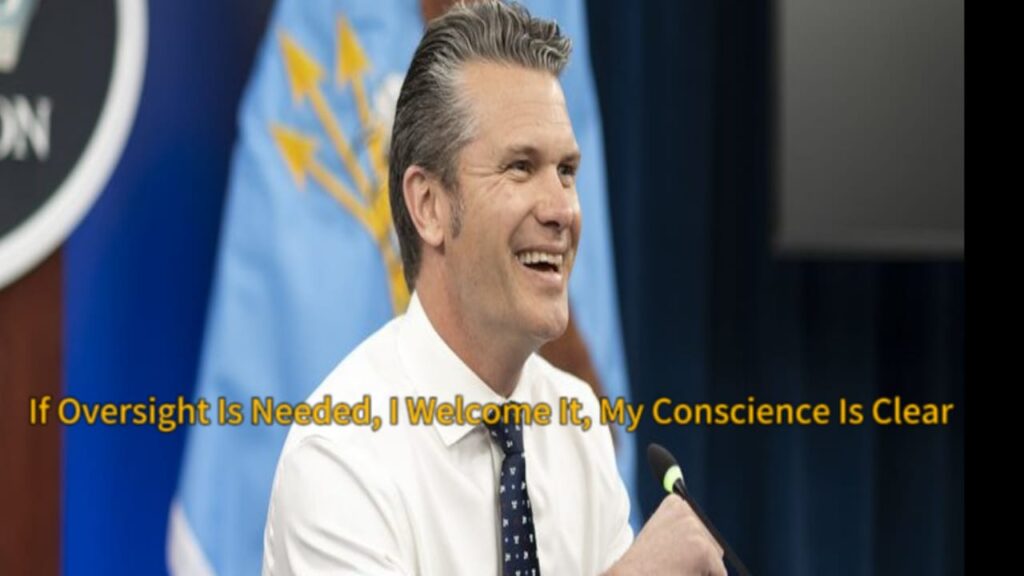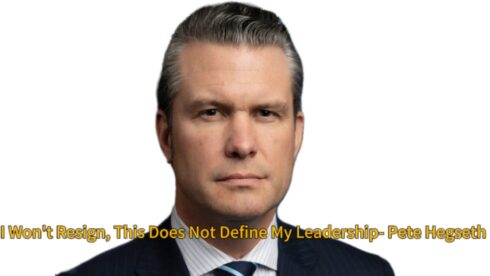U.S. Defense Secretary Pete Hegseth responded to explosive claims from the Associated Press revealing that he installed a private internet connection in his Pentagon office — one that reportedly bypassed official cybersecurity protocols. The setup, discovered during a routine audit, has since ignited intense national scrutiny over potential security breaches and unauthorized tech infrastructure at the heart of U.S. defense operations.
“I trusted the team that helped me install it, and I had no reason to believe it was outside compliance,” Hegseth continued, defending his actions as “well-intentioned.” However, cybersecurity watchdogs and Pentagon insiders alike view the move as a grave violation of classified environment protocols, warning that even inadvertent loopholes could have been exploited by foreign intelligence services.
“I did not authorize anything that compromised classified material — full stop.”
Hegseth’s firm denial of any classified data breach has done little to ease the concerns swirling around Washington. Experts fear the mere presence of a rogue, unmonitored internet connection within the Defense Secretary’s office creates a high-risk target for espionage by adversarial nations like China, Russia, or Iran.
“My goal was to have more reliable bandwidth during emergencies — not to run a shadow network,” Hegseth added, as analysts noted the setup lacked Pentagon-standard encryption and firewall protection. Several internal sources say the breach could lead to a wave of policy revisions aimed at re-securing all executive-level communications infrastructure.
“If oversight is needed, I welcome it — my conscience is clear.”

Hegseth’s defiance has not stopped lawmakers from calling for a full congressional investigation. Members of both the House and Senate Armed Services Committees have demanded sworn testimony, describing the incident as a “flagrant sidestep of cybersecurity doctrine.”
“I will answer every question because I’ve done nothing wrong,” Hegseth said, even as some legal analysts suggest his actions may violate federal data protection laws. The matter has escalated from an internal security issue to a full-blown political scandal, with watchdog groups demanding immediate administrative or legal accountability.
“This was a leadership call — not an act of negligence.”
Cybersecurity professionals have roundly criticized that justification, saying no single official — not even the Defense Secretary — is exempt from strict information security protocols. Some experts have called the unauthorized internet connection a “reckless precedent,” warning that it could be exploited by lower-ranking officials as a justification for bypassing security measures.
“I made a decision based on trust and urgency — not carelessness,” Hegseth said. However, digital security consultants argue that the mindset behind such decisions is precisely what compromises critical infrastructures. According to them, even one unprotected data stream could serve as an access point for surveillance or disruption.
“Let’s not politicize a technical issue — this is not a scandal, it’s a misstep.”
Hegseth’s attempt to downplay the controversy as a “technical error” has sparked fierce backlash within military circles. Several Defense Department cybersecurity teams are reportedly “furious” over what they see as blatant disregard for protocol — especially from someone tasked with upholding national defense.
“I take full responsibility, but I won’t accept the narrative that I endangered the country,” Hegseth maintained, in a televised interview meant to calm rising internal dissent. Meanwhile, whistleblowers within the Pentagon claim they previously raised red flags about lax security in Hegseth’s office — warnings they say were ignored.
“I won’t resign — this does not define my leadership.”
Despite mounting calls for his removal, Hegseth has made it clear he will not step down. Sources say the White House is “monitoring the situation closely,” and while the President has not publicly commented, pressure from both political parties is building.
“This was about speed and access — not subversion or secrecy,” Hegseth concluded. The Department of Defense is now reportedly launching a top-down audit of all communication systems used by its senior officials. Whether Pete Hegseth can ride out the storm or becomes a symbol of 21st-century cybersecurity failures remains to be seen.














